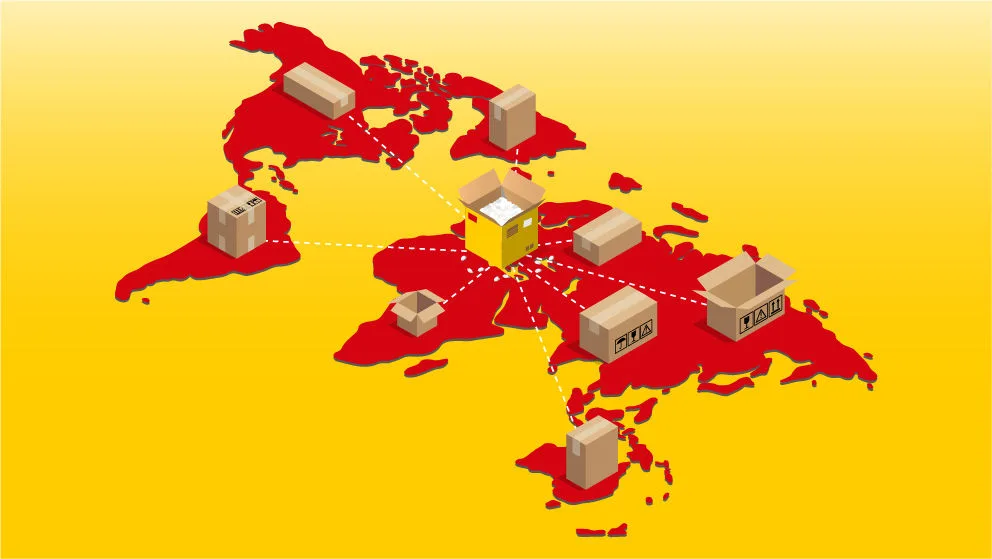With more customers turning to online shopping, fast and affordable delivery has become a standard expectation — especially for small businesses competing in today’s digital marketplace. But behind the scenes, managing shipping expenses can quickly become a burden if not handled efficiently.
Whether you’re shipping locally or overseas, the right strategies can help you save time and money. If you’re looking for ways to reduce shipping costs, improve margins, and deliver a better customer experience, this guide offers five practical tips tailored to small businesses in Ireland.
1. Audit Your Current Shipping Costs
Ask yourself - what exactly is costing me money when it comes to shipping? Take some time to outline the areas in question - in all likelihood, it’s one or more of:
Packaging materials: Boxes, tape, bubble wrap, labels, and anything else used to prepare your shipment
Labour time: The internal cost of staff preparing, packing, and dispatching orders
Courier charges: Pick-up, delivery, and any surcharges from your shipping provider
- Import/export fees: If you're managing international shipments, customs duties and clearance costs can add up
Once you’ve mapped out your current setup, you’ll be in a better position to spot cost-saving opportunities—whether that’s choosing more affordable materials, adjusting order handling processes, or negotiating better courier rates. A clear audit is often the first and most effective step toward finding ways to lower your shipping costs without compromising on quality.
2. Use the right packaging to lower shipping costs
Ever bought something online and received a box that could have been two or three sizes smaller? You probably wondered what went into the thought process of the person who sent it out. Chances are, they didn’t think too hard about it.
That’s not you, though. You’re going to cut costs, not corners, and it makes sense to start with the baseline of smartly and efficiently packing your goods. Here are a few simple ways to optimise your packaging and save on shipping costs.
Shipping costs are often tied to the size of your parcel, not just its weight. Using boxes that are too large or leave too much empty space can result in higher dimensional weight charges and increased material usage. To keep things cost-effective, choose packaging that fits your product snugly. Not only will this lower your shipping fees, but it also helps protect your items in transit by reducing movement inside the package.
3. Use lightweight packing material
Weight is another big factor in shipping costs. For soft goods like apparel or accessories, consider switching from standard boxes to lightweight packaging like polymailers or padded envelopes. They’re sturdy, protective, and much lighter—especially useful when shipping internationally or in bulk. Lightweight materials also make packing quicker and more efficient—saving you time at every step.
Look for free packaging
Many shipping providers, including DHL, offer free packaging materials as part of their service. Using courier-provided packaging not only cuts costs but also ensures your parcels meet the carrier’s shipping requirements.
It might not seem like a colossal saving on paper, but you’ll see the benefit of a structured, slimmed-down system the more you use it. Also, you’ll save more than money with these approaches - having a swift and regular routine should free up time to focus on other areas of your day-to-day duties.
Tip: Learn about sustainable packaging solutions and why it’s important to your business
Use flat-rate shipping for small business
If your business regularly ships items of a similar size or weight, flat-rate shipping can make things simpler and more affordable. Rather than calculating shipping costs on a case-by-case basis, flat rates let you pay a fixed amount based on size or weight categories—making budgeting far easier.
This approach benefits both you and your customers. Knowing exactly how much shipping will cost at checkout reduces uncertainty and can lower cart abandonment, especially when paired with transparent delivery timelines.
Carriers like DHL Express offer predictable, flat-rate shipping options that are ideal for small businesses looking to streamline their fulfilment. If you ship consistently each month, you may even qualify for bulk discounts or business shipping programmes — a smart way to reduce costs without compromising speed or service.
4. Offer customers a free shipping threshold
Free shipping is one of the most powerful incentives for online shoppers—and when used strategically, it can also help lower your overall shipping costs.
Rather than offering free shipping on every order, consider setting a minimum order threshold that unlocks free delivery. For example, you might offer free shipping on purchases over €50. This encourages customers to spend more in one transaction, which means fewer individual shipments for you to handle—and fewer packaging, handling, and courier costs.
If offering free shipping across the board feels unsustainable, try a tiered approach:
Free shipping for orders above a set amount
Paid express shipping for faster delivery
Affordable standard rates for smaller purchases
This gives customers flexibility while letting you stay in control of your costs.
With DHL Ireland’s Dynamic Discounting programme, businesses get greater discounts as their shipping volume grows. Encouraging larger orders not only boosts sales but also unlocks more favourable shipping rates.
5. Offer local delivery or pickup
Another way to cut shipping costs is by offering local delivery or in-store pickup—especially if you operate within a defined area in Ireland. This is a smart option for small businesses with a physical location or local customer base.
Local same-day couriers, like DHL, can help you deliver quickly without the high costs associated with nationwide or international shipping. If customers are nearby, encourage them to opt for store pickup or local drop-off—it’s faster, cheaper, and builds loyalty through convenience.
You can also mix it up with a hybrid model—offering free local pickup and low-cost courier delivery within your region, while reserving standard shipping for out-of-area orders.
6. Leverage technology to reduce shipping costs
Technology doesn’t just improve efficiency—it plays a key role in helping small businesses cut down on shipping costs. From fulfilment to last-mile delivery, cutting-edge technology options can save time, reduce errors, and ensure you’re always getting the best deal. Here’s how:
Automated fulfilment & label generation: Reduce manual packing time and minimise human error by automating label creation. Shipping platforms can automatically select the most cost-effective courier based on size, weight, and destination—helping you avoid overpaying and keeping handling costs in check.
Carrier rate comparison tools: Instantly compares real-time shipping rates across different courier providers, helping you avoid overpaying.
AI-driven route optimisation: If you handle local deliveries or manage a small fleet, AI can optimise delivery routes by grouping nearby orders. This reduces travel time, fuel usage, and the number of trips required—cutting down operational costs while improving delivery efficiency.
AI-driven computer vision: Advanced tools using AI-driven computer vision can automate package inspections and improve accuracy in sorting and packing, reducing errors that lead to costly reshipments.
Returns management software: Automating your returns process reduces the workload on your customer service team and simplifies reverse logistics. It can also help consolidate return shipments, lowering your overall return handling costs.
Warehouse & inventory automation: Digital tools like barcode scanners and smart inventory tracking make order picking faster and more accurate. With fewer errors and quicker turnaround, your fulfilment process becomes more efficient—reducing your cost per shipment.
- Shipping zones & data analytics tools: Analytics tools can highlight regions where shipping is unusually expensive. By using this data, you can adjust your delivery zones, tweak pricing policies, or explore local fulfilment solutions to bring those costs down.
Incorporating these solutions into your international shipping checklist ensures you're not missing opportunities to improve efficiency, enhance logistics management and reduce costs. There are numerous positive case studies you can read up on that show how these tools help small businesses save time and reduce shipping spend.
Don’t let high shipping costs hold your business back
Understanding how to decrease shipping costs for small businesses requires strategic planning and thoughtful execution. As online shopping continues to grow, businesses must adapt to meet customer expectations while keeping their shipping expenses under control.
By implementing the tips in this article, business owners can significantly cut expenses and streamline their shipping process. Additionally, embracing innovative technology solutions like warehouse automation and offering incentives such as free shipping thresholds can enhance customer satisfaction and loyalty.
For reliable international and domestic delivery, DHL Express offers a wide range of solutions tailored to small businesses—from the best rate quotes and up-to-date transit times to same-day services and expert support with duties and taxes.
Ready to minimise your shipping costs and grow your business with confidence? Explore DHL’s small business shipping solutions today.


























